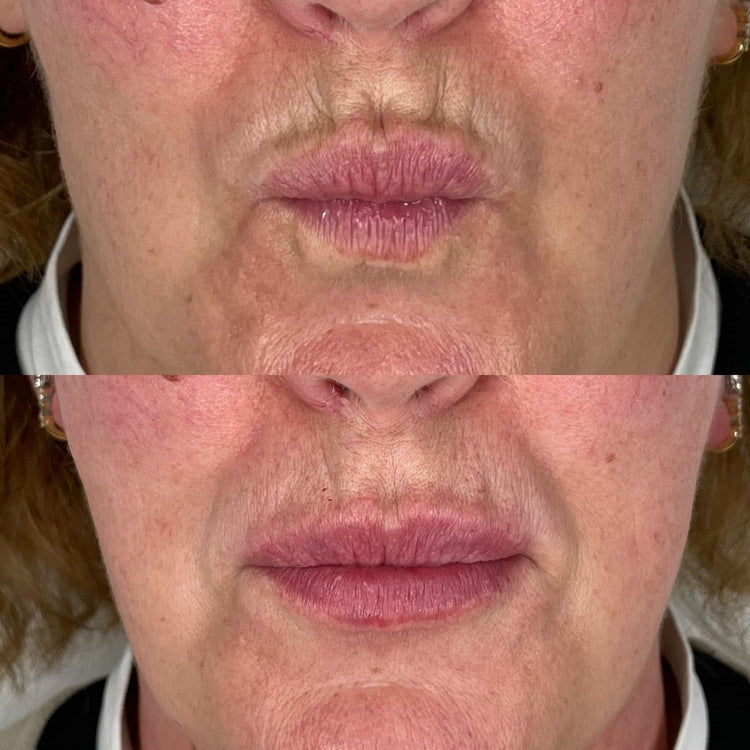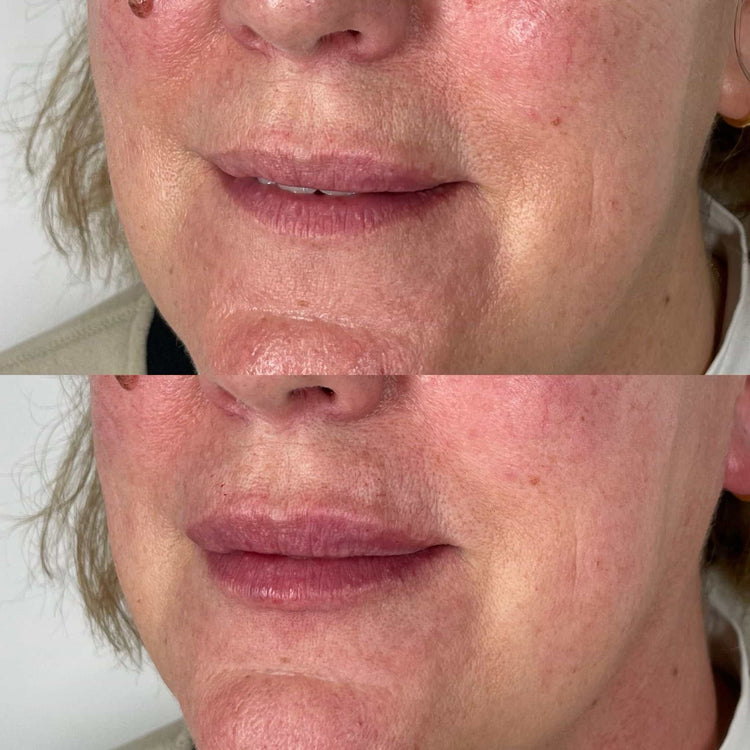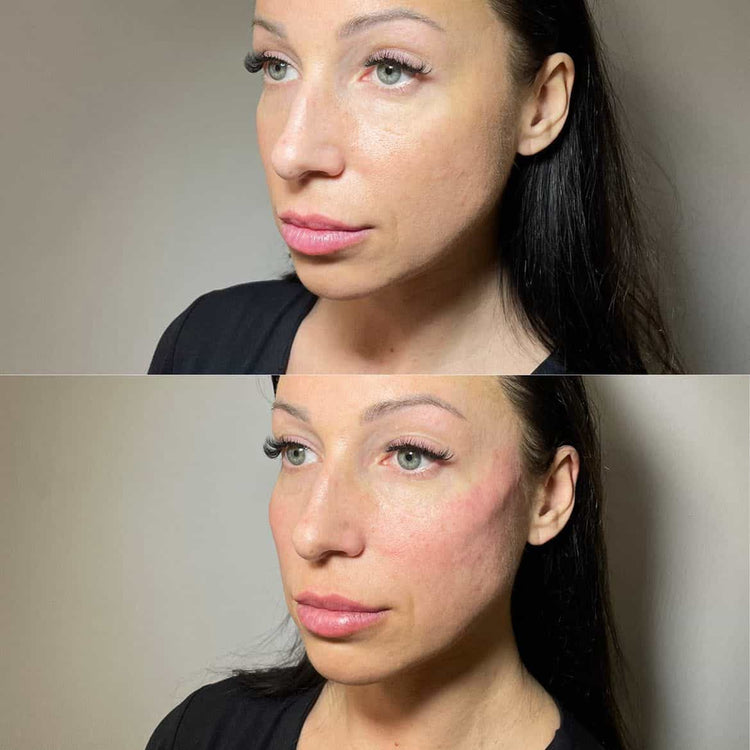Benefits of Dermal Fillers over Surgery
For those considering facial rejuvenation, dermal fillers offer a compelling alternative to traditional surgery. These injectable treatments provide numerous benefits, including minimal downtime, reduced risk of complications, and customizable results.
Reduced Downtime
One major advantage of dermal fillers over surgery is significantly reduced downtime. Unlike surgical procedures that often require weeks or even months of recovery, filler injections can be performed quickly in a doctor’s office with minimal discomfort.
Most patients can return to their normal activities immediately after treatment.
Less Invasive Procedure
For those considering facial rejuvenation, dermal fillers offer a compelling alternative to traditional surgery. These injectable treatments provide numerous benefits, including minimal downtime, reduced risk of complications, and customizable results.
One major advantage of dermal fillers over surgery is significantly reduced downtime. Unlike surgical procedures that often require weeks or even months of recovery, filler injections can be performed quickly in a doctor’s office with minimal discomfort.
Most patients can return to their normal activities immediately after treatment.
Additionally, dermal fillers carry a lower risk of complications compared to surgery. Surgical procedures involve risks such as infection, scarring, and adverse reactions to anesthesia. Dermal fillers minimize these risks as they are non-surgical and involve minimal tissue manipulation.
- Less invasive
- Reduced downtime
- Lower risk of complications
Minimally Disruptive Recovery
Another benefit is the ability to customize results. Dermal fillers come in different types and viscosities, allowing practitioners to tailor treatment to individual needs and desired outcomes. Patients can address specific concerns, such as wrinkles, volume loss, or facial contours.
Unlike surgery, which often involves significant alteration to facial structure, dermal fillers offer a more subtle and gradual approach to rejuvenation.
Common Areas Treated with Dermal Fillers
Common areas treated with dermal fillers include the forehead, frown lines, cheeks, lips, nasolabial folds (smile lines), and under the eyes. These strategically placed injections can smooth wrinkles, enhance facial contours, restore volume, and create a more youthful appearance.
Facial Volume Loss
Facial volume loss is a common concern as we age.
Dermal fillers are effective in addressing this by restoring lost volume to different areas of the face.
Common areas treated with dermal fillers include the cheeks, temples, and jawline.
Wrinkles and Fine Lines
For those considering facial rejuvenation, dermal fillers offer a compelling alternative to traditional surgery. These injectable treatments provide numerous benefits, including minimal downtime, reduced risk of complications, and customizable results.
One major advantage of dermal fillers over surgery is significantly reduced downtime. Unlike surgical procedures that often require weeks or even months of recovery, filler injections can be performed quickly in a doctor’s office with minimal discomfort.
Most patients can return to their normal activities immediately after treatment.
Additionally, dermal fillers carry a lower risk of complications compared to surgery. Surgical procedures involve risks such as infection, scarring, and adverse reactions to anesthesia. Dermal fillers minimize these risks as they are non-surgical and involve minimal tissue manipulation.
- Less invasive
- Reduced downtime
- Lower risk of complications
Another benefit is the ability to customize results. Dermal fillers come in different types and viscosities, allowing practitioners to tailor treatment to individual needs and desired outcomes. Patients can address specific concerns, such as wrinkles, volume loss, or facial contours.
Unlike surgery, which often involves significant alteration to facial structure, dermal fillers offer a more subtle and gradual approach to rejuvenation.
Common areas treated with dermal fillers include the forehead, frown lines, cheeks, lips, nasolabial folds (smile lines), and under the eyes. These strategically placed injections can smooth wrinkles, enhance facial contours, restore volume, and create a more youthful appearance.
Facial volume loss is a common concern as we age.
Dermal fillers are effective in addressing this by restoring lost volume to different areas of the face.
Common areas treated with dermal fillers include the cheeks, temples, and jawline.
Lips Enhancement
Lips enhancement is a popular treatment using dermal fillers.
Fillers can plump up thin lips, define their shape, and create a more youthful appearance.
Cheek Augmentation
Cheek augmentation is another common use for dermal fillers.
Fillers can add volume to the cheeks, creating a more sculpted and youthful appearance.
Types of Dermal Fillers Available
Various types of dermal fillers are available, each formulated with different properties to address specific cosmetic concerns. Hyaluronic acid fillers, such as Juvederm and Restylane, are popular choices due to their ability to attract and retain moisture, adding volume and smoothing wrinkles.
Hyaluronic Acid Fillers
There are various types of dermal fillers available, each designed for specific cosmetic goals. Hyaluronic acid fillers are among the most common and versatile options.
These fillers work by attracting and retaining moisture in the skin, plumping up areas and smoothing wrinkles.
Popular hyaluronic acid fillers include Juvederm and Restylane, which come in different formulations to address various concerns such as facial volume loss, fine lines, and lip enhancement.
Calcium Hydroxylapatite Fillers
Dermal fillers are a popular choice for those seeking non-surgical facial rejuvenation. These injectables come in various types, each designed for specific cosmetic goals.
- Calcium hydroxylapatite (CaHA) fillers are a type of dermal filler that is gaining popularity. CaHA fillers are made from microspheres of calcium hydroxylapatite, which is a natural mineral found in the body.
CaHA fillers provide long-lasting results and are known for their ability to stimulate collagen production, leading to improved skin texture and elasticity.
They are often used to treat wrinkles, folds, and volume loss in various areas of the face, including the cheeks, jawline, and under the eyes.
Poly-L-Lactic Acid (PLLA) Fillers
There are various types of dermal fillers available, each designed for specific cosmetic goals. Hyaluronic acid fillers are among the most common and versatile options. These fillers work by attracting and retaining moisture in the skin, plumping up areas and smoothing wrinkles. Popular hyaluronic acid fillers include Juvederm and Restylane, which come in different formulations to address various concerns such as facial volume loss, fine lines, and lip enhancement.
Poly-L-Lactic Acid (PLLA) fillers are another type of dermal filler that is becoming increasingly popular. PLLA fillers work differently than hyaluronic acid fillers. Instead of adding immediate volume, PLLA stimulates the body’s own collagen production.
This gradual process results in a more natural and long-lasting lift over several months. PLLA fillers are often used to address facial wrinkles, loss of volume, and skin laxity.
The Filler Treatment Process
For those considering facial rejuvenation, dermal fillers offer a compelling alternative to traditional surgery. These injectable treatments provide numerous benefits, including minimal downtime, reduced risk of complications, and customizable results.
Consultation and Assessment
The filler treatment process typically begins with a consultation and assessment. During this initial appointment, a qualified practitioner will discuss your aesthetic goals, medical history, and any existing skin conditions. They will also examine your facial structure and determine which areas could benefit from dermal fillers.
Based on the consultation, the practitioner will recommend a suitable type and volume of filler to achieve your desired outcome. They will explain the procedure, potential side effects, and expected results.
Before the treatment, you will receive local anesthesia to minimize discomfort. The filler is then injected into specific points using a fine needle or cannula. The entire process usually takes less than an hour.
After the procedure, you may experience some mild swelling, redness, or bruising which typically subsides within a few days.
Your practitioner will provide post-treatment instructions, including recommendations for skincare and activities to avoid to ensure proper healing and optimal results.
Injection Procedure
For those considering facial rejuvenation, dermal fillers offer a compelling alternative to traditional surgery. These injectable treatments provide numerous benefits, including minimal downtime, reduced risk of complications, and customizable results.
The filler treatment process typically begins with a consultation and assessment. During this initial appointment, a qualified practitioner will discuss your aesthetic goals, medical history, and any existing skin conditions. They will also examine your facial structure and determine which areas could benefit from dermal fillers.
Based on the consultation, the practitioner will recommend a suitable type and volume of filler to achieve your desired outcome. They will explain the procedure, potential side effects, and expected results.
Before the treatment, you will receive local anesthesia to minimize discomfort. The filler is then injected into specific points using a fine needle or cannula. The entire process usually takes less than an hour.
After the procedure, you may experience some mild swelling, redness, or bruising which typically subsides within a few days.
Your practitioner will provide post-treatment instructions, including recommendations for skincare and activities to avoid to ensure proper healing and optimal results.
- Less invasive
- Reduced downtime
- Lower risk of complications
Another benefit is the ability to customize results. Dermal fillers come in different types and viscosities, allowing practitioners to tailor treatment to individual needs and desired outcomes. Patients can address specific concerns, such as wrinkles, volume loss, or facial contours.
Unlike surgery, which often involves significant alteration to facial structure, dermal fillers offer a more subtle and gradual approach to rejuvenation.
Common areas treated with dermal fillers include the forehead, frown lines, cheeks, lips, nasolabial folds (smile lines), and under the eyes. These strategically placed injections can smooth wrinkles, enhance facial contours, restore volume, and create a more youthful appearance.
Facial volume loss is a common concern as we age.
Dermal fillers are effective in addressing this by restoring lost volume to different areas of the face.
Common areas treated with dermal fillers include the cheeks, temples, and jawline.

Lips enhancement is a popular treatment using dermal fillers.
Fillers can plump up thin lips, define their shape, and create a more youthful appearance.
Cheek augmentation is another common use for dermal fillers.
Fillers can add volume to the cheeks, creating a more sculpted and youthful appearance.
Various types of dermal fillers are available, each formulated with different properties to address specific cosmetic concerns. Hyaluronic acid fillers, such as Juvederm and Restylane, are popular choices due to their ability to attract and retain moisture, adding volume and smoothing wrinkles.
There are various types of dermal fillers available, each designed for specific cosmetic goals. Hyaluronic acid fillers are among the most common and versatile options.
These fillers work by attracting and retaining moisture in the skin, plumping up areas and smoothing wrinkles.
Popular hyaluronic acid fillers include Juvederm and Restylane, which come in different formulations to address various concerns such as facial volume loss, fine lines, and lip enhancement.

Dermal fillers are a popular choice for those seeking non-surgical facial rejuvenation. These injectables come in various types, each designed for specific cosmetic goals.
- Calcium hydroxylapatite (CaHA) fillers are a type of dermal filler that is gaining popularity. CaHA fillers are made from microspheres of calcium hydroxylapatite, which is a natural mineral found in the body.
CaHA fillers provide long-lasting results and are known for their ability to stimulate collagen production, leading to improved skin texture and elasticity.
They are often used to treat wrinkles, folds, and volume loss in various areas of the face, including the cheeks, jawline, and under the eyes.
There are various types of dermal fillers available, each designed for specific cosmetic goals. Hyaluronic acid fillers are among the most common and versatile options. These fillers work by attracting and retaining moisture in the skin, plumping up areas and smoothing wrinkles. Popular hyaluronic acid fillers include Juvederm and Restylane, which come in different formulations to address various concerns such as facial volume loss, fine lines, and lip enhancement.
Poly-L-Lactic Acid (PLLA) fillers are another type of dermal filler that is becoming increasingly popular. PLLA fillers work differently than hyaluronic acid fillers. Instead of adding immediate volume, PLLA stimulates the body’s own collagen production.
This gradual process results in a more natural and long-lasting lift over several months. PLLA fillers are often used to address facial wrinkles, loss of volume, and skin laxity.
Aftercare Instructions
Dermal filler treatments typically involve the following aftercare instructions:
- Avoid touching or massaging the treated area for at least 24 hours.
- Apply ice packs to minimize swelling and bruising.
- Avoid strenuous activity, including exercise, for a few days.
- Do not expose the treated area to direct sunlight or tanning beds.
- Continue using sunscreen daily to protect the treated skin.
- Follow your practitioner’s instructions regarding skincare products and medications.
- Attend any scheduled follow-up appointments for monitoring and adjustments.
Long-Term Effects and Maintenance
Long-term effects of dermal fillers depend on various factors, including the type of filler used, individual skin characteristics, and lifestyle choices. Hyaluronic acid fillers tend to last anywhere from six months to two years, gradually being absorbed by the body over time.
Filler maintenance involves repeat treatments to maintain the desired results. The frequency of these touch-up appointments will vary based on the type of filler used, individual metabolism, and desired aesthetic outcome.

Duration of Results
Long-term effects of dermal fillers can vary depending on several factors such as the specific type of filler used, individual skin characteristics, and lifestyle factors like sun exposure and smoking.
Hyaluronic acid fillers, a popular choice for their natural look and feel, typically last between six months to two years. Over time, these fillers are naturally metabolized by the body.
To maintain the desired results, repeat treatments are generally required, with touch-up appointments often scheduled every six to 18 months.
Repeat Treatments
Long-term effects of dermal fillers depend on the specific type used and individual factors like skin characteristics and lifestyle. Hyaluronic acid fillers, commonly employed for their natural appearance, typically last six months to two years before being gradually absorbed by the body.
Maintenance involves repeat treatments to prolong the results. Touch-up appointments are usually scheduled every six to 18 months, depending on the filler type, individual metabolism, and desired aesthetic outcome.
Potential Side Effects
Long-term effects of dermal fillers vary depending on several factors, including the type of filler used, individual skin characteristics, and lifestyle choices. Hyaluronic acid fillers, a popular choice for their natural look and feel, typically last between six months to two years before being gradually absorbed by the body.
To maintain the desired results, repeat treatments are generally required, with touch-up appointments often scheduled every six to 18 months.
Potential side effects of dermal fillers are generally mild and temporary, including redness, swelling, bruising, and tenderness at the injection site. These typically subside within a few days.
More serious side effects are rare but can include infection, allergic reaction, or vascular occlusion (blockage of blood vessels). It is crucial to choose a qualified and experienced practitioner who uses sterile techniques and high-quality fillers to minimize the risk of complications.
Book your consultation for facial volume restoration at It’s Me & You Clinic with Dr. Laura Geige
- How Emotional Trauma Affects Future Romantic Relationships - May 14, 2025
- Top-Rated THC Beverages That Actually Taste Good - May 14, 2025
- How Dermal Fillers Are Helping UK Clients Avoid Surgery - May 14, 2025
